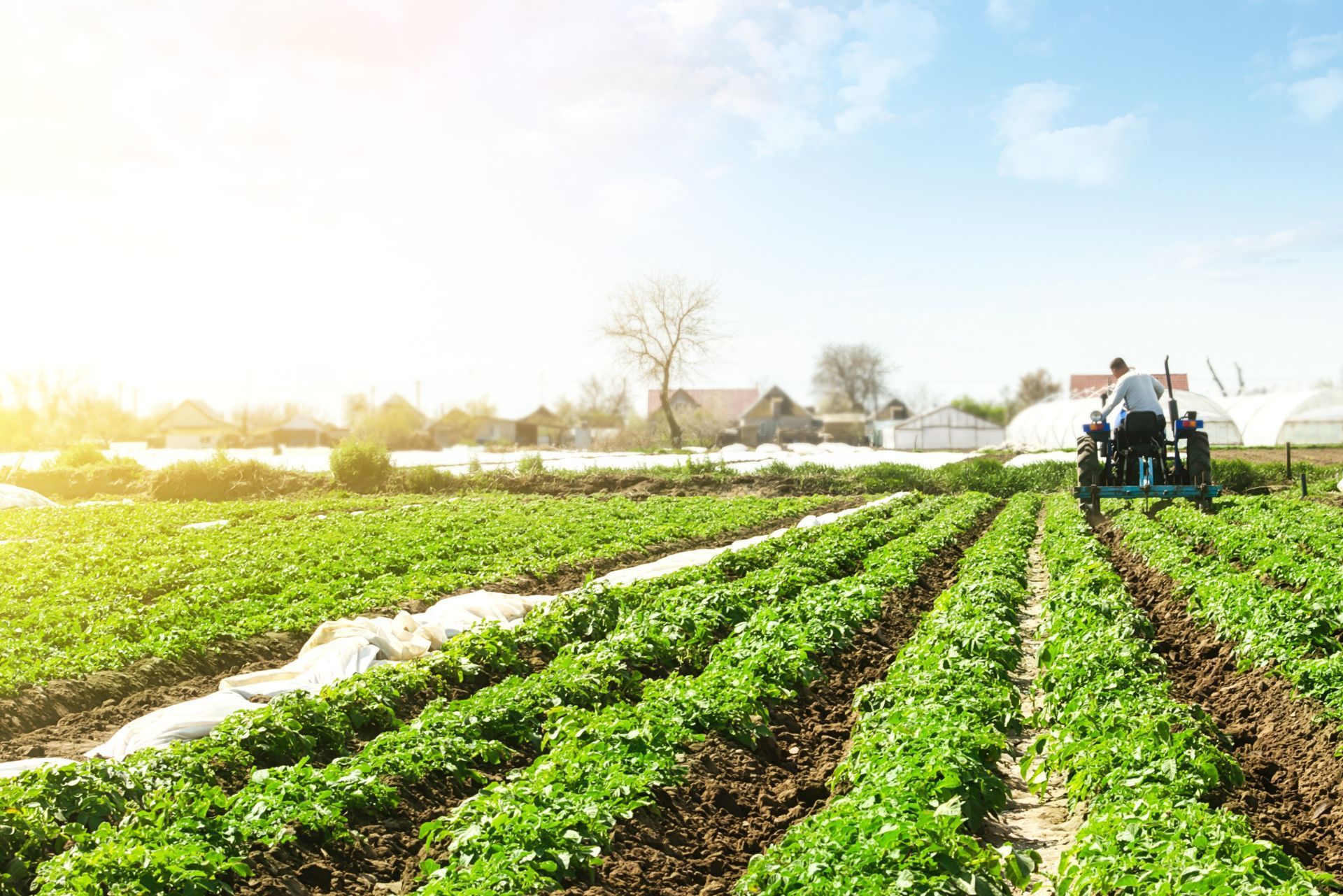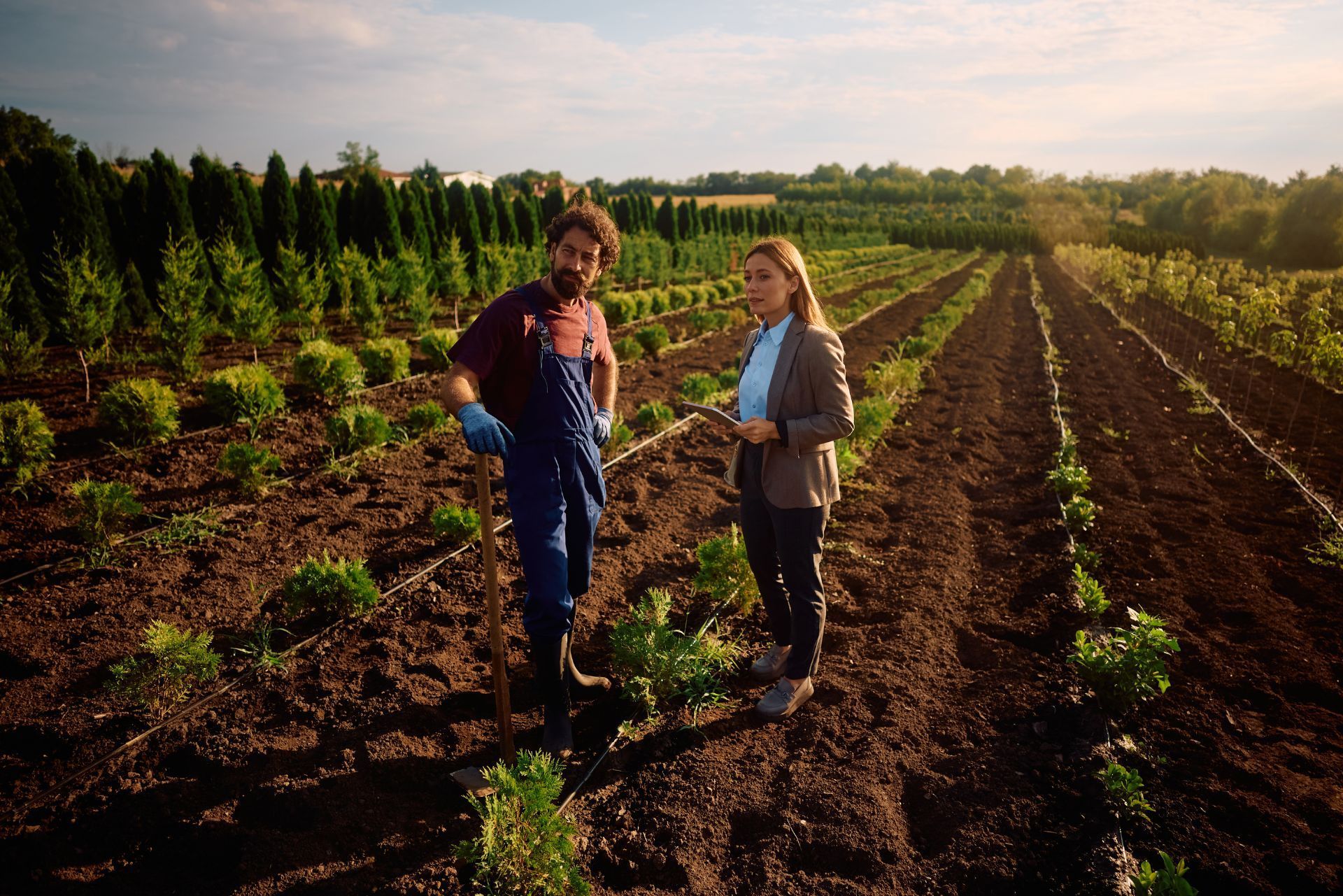
Top 3 Recommended Policies

GIn the world of agriculture, managing risk is as crucial as cultivating the soil. For row-crop farmers across the United States, crop insurance has become a cornerstone of financial stability and resilience. With 91% of U.S. crop producers purchasing crop insurance in 2024, and 90% maintaining consistent coverage over the past five years, this safety net is more than just a policy—it's a lifeline for the farming community. Recent statistics underscore the widespread reliance on crop insurance, reflecting its vital role in safeguarding farmers' livelihoods against unpredictable challenges.
This comprehensive article explores the evolving landscape of row-crop farm insurance, highlighting its significance, recent policy developments, the impact of climate change, and the technological advancements shaping its future. Whether you are a farmer, an agribusiness professional, or simply interested in agricultural risk management, understanding these dynamics is essential to appreciating why crop insurance remains the ultimate tool for protecting row-crop farms.
The Role of Crop Insurance in Row-Crop Farming
Crop insurance serves as the fundamental element of the farm safety net, providing financial protection against losses caused by natural disasters, adverse weather, pests, and market fluctuations. Tom Zacharias, president of National Crop Insurance Services, emphasizes this critical role, stating, "Crop insurance is the fundamental element of the farm safety net these days." This sentiment resonates strongly, especially as farmers face tightening profit margins and increasing operational uncertainties.
Row crops, including corn, soybeans, cotton, and wheat, represent a significant portion of insured acreage under the Federal Crop Insurance Program. In fact, by 2022, insured acreage had surged to 494 million acres from 206 million acres in 2000, with row crops accounting for 74% of insured liability. This growth reflects both the expanding adoption of insurance products and the increasing value placed on risk mitigation in row-crop agriculture.
For many farmers, crop insurance is not merely a regulatory requirement or a financial instrument but a strategic tool that enables them to plan confidently for the future. It stabilizes income streams, facilitates access to credit, and supports investment in modern farming practices. Without this safety net, the volatility inherent in agriculture could jeopardize farm operations and rural economies.
Moreover, the intricacies of crop insurance are tailored to meet the diverse needs of farmers across various regions and crop types. Programs such as Actual Production History (APH) and Revenue Protection (RP) allow farmers to select coverage levels that align with their specific risk profiles and operational goals. This customization is crucial, as it empowers farmers to make informed decisions based on their unique circumstances, whether they are dealing with drought conditions in the Midwest or flooding in the Southeast. Additionally, the integration of technology in crop insurance—such as satellite imagery and data analytics—has enhanced the precision of risk assessment and claims processing, making it easier for farmers to navigate the complexities of their coverage.
Furthermore, the impact of crop insurance extends beyond individual farms; it plays a vital role in the broader agricultural economy. By providing a safety net, crop insurance encourages farmers to invest in sustainable practices and innovative technologies that can improve yields and reduce environmental impact. This ripple effect not only bolsters the resilience of farming operations but also contributes to the stability of food supply chains and rural communities. As farmers adopt more sustainable methods, they can mitigate risks associated with climate change and market volatility, ultimately leading to a more robust agricultural sector that benefits everyone from producers to consumers.
Policy Developments Enhancing Crop Insurance Coverage
Recent legislative changes have further strengthened the crop insurance framework, making it more comprehensive and accessible for row-crop producers. The 2025 Farm Bill introduced a significant expansion in publicly subsidized price risk management by increasing the Supplemental Coverage Option (SCO) coverage to 90% with an 80% subsidy rate. This enhancement provides farmers with greater protection against price declines and yield losses, effectively broadening the safety net.
Such policy advancements acknowledge the evolving risks faced by farmers and the need for adaptive insurance solutions. By increasing subsidy rates and coverage levels, the government aims to encourage wider participation and ensure that farmers can maintain financial stability even in adverse conditions.
These improvements also reflect a growing recognition of the complex challenges in agriculture, including market volatility and climate-related risks. As the insurance landscape adapts, farmers benefit from more tailored options that align with their specific risk profiles and operational needs. For more detailed insights into these policy changes, the farmdocdaily analysis provides an in-depth overview.
Moreover, the enhancements to crop insurance are not just about financial security; they also promote sustainable farming practices. With increased coverage, farmers can feel more confident investing in environmentally friendly technologies and practices that may initially seem risky. For instance, the adoption of precision agriculture techniques, which require upfront investment, can be supported by the assurance that crop insurance will mitigate potential losses from unforeseen circumstances. This shift not only benefits individual farmers but also contributes to the overall resilience of the agricultural sector.
Additionally, the expansion of crop insurance options is expected to stimulate innovation within the agricultural industry. As farmers explore new crops and farming methods, the
insurance policies are evolving to accommodate these changes. This dynamic interplay between policy and practice fosters a more robust agricultural economy, where producers are encouraged to experiment and adapt to changing market demands. The integration of technology, such as data analytics and remote sensing, into crop insurance assessments further enhances the accuracy of risk evaluations, ensuring that farmers receive fair premiums and payouts based on actual conditions.

Climate Change and Its Impact on Crop Insurance Claims
Climate change poses one of the most significant threats to row-crop farming and, by extension, to crop insurance programs. Increasingly erratic weather patterns, prolonged droughts, flooding, and temperature extremes are driving up the frequency and severity of crop losses. Studies indicate that these climatic shifts will have profound implications for insurance claims and risk management strategies.
For instance, research published in the Journal of Data Science, Statistics, and Visualisation predicts that insurance claims for corn crops could rise by 22% by 2030 and nearly 29% by 2050 due to climate change. This trend signals escalating risks for one of the nation’s most important row crops, underscoring the need for adaptive insurance products and proactive risk mitigation measures.
Further research highlights that climate change could potentially double the annual probability of maize yield protection insurance claims in the U.S. Corn Belt by mid-century. These findings emphasize the urgency for insurers and farmers alike to prepare for a future where traditional risk models may no longer suffice. Understanding these dynamics is critical for maintaining the viability of crop insurance as a reliable safety net. More details on this research can be found at arxiv.org.
Moreover, the implications of climate change extend beyond immediate crop yield losses; they also affect the broader agricultural economy. Farmers may face increased premiums for crop insurance as insurers adjust their risk assessments to account for the heightened uncertainty brought on by climate variability. This could lead to a cycle where higher costs deter some farmers from purchasing adequate coverage, leaving them vulnerable to financial ruin in the event of a disaster. The potential for increased claims could also strain insurance providers, necessitating a reevaluation of their operational models and reserve strategies.
In addition, the changing climate is likely to influence the types of crops that can be sustainably grown in certain regions. As temperatures rise and precipitation patterns shift, farmers may need to adapt by transitioning to more resilient crop varieties or altering planting schedules. This shift not only impacts crop insurance claims but also necessitates a comprehensive understanding of regional agricultural trends and the development of new insurance products tailored to these evolving challenges. Policymakers and agricultural stakeholders must collaborate to ensure that insurance frameworks are flexible enough to accommodate these changes while still providing essential support to farmers in an increasingly unpredictable environment.
Technological Innovations Transforming Crop Insurance
Technology is revolutionizing the crop insurance industry, enhancing risk assessment, claims processing, and overall service delivery. The integration of satellite imaging, drones, and machine learning is enabling insurers to gather more accurate and timely data, improving the precision of coverage and the efficiency of claim settlements.
Satellite imagery allows for continuous monitoring of crop health and environmental conditions, providing real-time insights that can detect issues before they escalate. Drones offer detailed aerial views, capturing high-resolution images that help assess damage more quickly and accurately. Meanwhile, machine learning algorithms analyze vast datasets to predict risks, optimize pricing, and streamline claims processing.
These technological advancements not only reduce administrative costs but also enhance transparency and trust between farmers and insurers. By leveraging cutting-edge tools, the crop insurance industry is better equipped to respond to the complex challenges of modern agriculture. A comprehensive report by Research and Markets delves into these emerging trends and their implications for the future of crop insurance.
Furthermore, the rise of mobile applications is also playing a pivotal role in transforming how farmers interact with their insurance providers. These apps allow farmers to easily report losses, track claims, and receive timely updates about their policies from the convenience of their smartphones. This level of accessibility not only empowers farmers but also fosters a more proactive approach to risk management, as they can stay informed about potential threats to their crops in real-time.
Additionally, the use of blockchain technology is beginning to emerge as a game-changer in the crop insurance sector. By providing a secure and transparent ledger for transactions, blockchain can help mitigate fraud and ensure that claims are processed fairly and efficiently. This technology can also facilitate smart contracts, which automatically execute claims payments when predefined conditions are met, further expediting the claims process and providing peace of mind to farmers during critical times.

Why Row-Crop Farmers Should Prioritize Crop Insurance
Given the increasing risks and uncertainties in agriculture, row-crop farmers must view crop insurance as an indispensable component of their risk management strategy. It provides a financial buffer against unpredictable events, ensuring that a single adverse season does not lead to catastrophic losses.
Moreover, crop insurance supports farm profitability and sustainability. By mitigating risk, it encourages investment in improved farming practices and technologies that can enhance yields and environmental stewardship. It also plays a critical role in securing credit, as lenders often require insurance coverage to protect their investments.
In tight profit margin environments, the importance of crop insurance cannot be overstated. As Tom Zacharias notes, even when margins are squeezed, crop insurance remains the fundamental safety net that allows farmers to continue operations and plan for growth. For anyone involved in row-crop farming, understanding and leveraging crop insurance is essential to long-term success and resilience. Additional perspectives on this can be found at Agweek.
Furthermore, the landscape of crop insurance is continually evolving, with new products and policies being introduced to better meet the needs of farmers. For instance, many insurance providers now offer specialized coverage options that account for the unique challenges posed by climate change, such as increased frequency of droughts and floods. These innovations not only provide tailored solutions but also reflect the growing recognition of the need for adaptive strategies in agriculture. Farmers who stay informed about these developments can better align their insurance choices with their operational goals and risk profiles.
Additionally, participating in educational programs and workshops can significantly enhance a farmer's understanding of crop insurance. Many agricultural extension services and industry organizations offer resources that help farmers navigate the complexities of insurance policies, claims processes, and the latest industry trends. By actively engaging in these learning opportunities, farmers can make more informed decisions that not only protect their investments but also contribute to the overall resilience of the agricultural sector.
Conclusion
Row-crop farm insurance stands as the ultimate safeguard in an increasingly complex and risky agricultural landscape. With widespread adoption, supportive policy frameworks, growing climate challenges, and rapid technological innovation, crop insurance continues to evolve to meet the needs of modern farmers.
For row-crop producers, embracing crop insurance is not just about compliance or risk avoidance; it is about securing the future of their farms, communities, and the broader food system. As the industry advances, staying informed and proactive about insurance options and emerging trends will be key to thriving in the face of uncertainty.
In summary, crop insurance remains a vital pillar of agricultural resilience—one that empowers row-crop farmers to weather storms, capitalize on opportunities, and cultivate success season after season.
Contact Us

